Sigurd Olson wrote his books in a converted single-car garage that he
called "the shack." Throughout the 1930s he had longed for a quiet place to
write, away from the noise of children and telephones, and in September 1937 he
spent $150 to renovate the garage.
"Now it will make no difference how many are in the house, what
company we have or how many guests," he wrote in his journal. "Nothing will
bother me out here."

Well, it wasn't quite as simple as Sigurd expected, but over the years he found he could do his best writing here.
(...)Sigurd Olson, in his spare time, ghosted part of the National Wilderness Act, always fighting to preserve and protect his love, the Boundary Waters Canoe Area — on this typewriter.
It’s just a small shack, really an old garage — a drab olive green with a pair of windows on each side, tucked under a few shade trees in the corner of the yard.
When you enter, you hear the spring of a weathered, wooden screen door, and the slap when it closes behind.
Inside, it’s mustiness and old pine. The faded Royal typewriter still waits on a broad oak desk. Olson’s pipes are in the shallow bowl to the right.
 |
Sigurd Olson at Quetico
|
From this typewriter, and this shack, Sigurd Olson captured in words the spirit of wilderness. Olson’s poetic writing has been compared to Henry David Thoreau’s, or John Muir’s. Chuck Wick owns the shack now.
“There’s all kinds of stuff here,” Wick says, fumbling a metal axe head pulled from a wooden drawer. “This piece here — this is an interesting one here. This is a trader’s axe that’s back from the voyageurs era.”
As he worked in his shack, Olson worried that 20th century America was fast gobbling up the nation’s last wild places.(...)
 |
| Sigurd Olson's final words left in his typewriter. Photo courtesy Tobias W.H.
Tan. |
"A new adventure is coming up and I'm sure it will be a good
one."
Last words Sigurd typed, found in his
typewriter after his death on 1982
 |
Sigurd Olson at Listening Point, ca 1981
A Sense of Place: Sigurd Olson's Listening Point
Sigurd Olson's second book, Listening Point, is named after the property he owned on Burntside Lake, about ten miles away from his home in Ely. He got the idea for naming the property from his daughter-in-law Yvonne, who toured the property for the first time in the spring of 1958. Her husband, Sigurd's son Robert, was a U.S. Foreign Service officer serving in the Middle East. As Sigurd showed Yvonne the point and described what it meant to him, she noticed a similarity with the way the diplomatic community described Benghazi, Libya. They called it a "listening post," from which they could stay connected with the ebb and flow of life along the entire north coast of Africa. She said the way he described his point made it sound like a listening post for the wilderness. From then on Sigurd called his special place Listening Point. His book by that name, published later that same year, begins with a wonderful description that captures the depth of meaning and connectedness associated with a well-developed sense of place:
Listening Point is a bare glaciated spit of rock in the Quetico-Superior country. Each time I have gone there I have found something new which has opened up great realms of thought and interest. For me it has been a point of discovery and, like all such places of departure, has assumed meaning far beyond the ordinary.
From it I have seen the immensity of space and glimpsed at times the grandeur of creation. There I have sensed the span of uncounted centuries and looked down the path all life has come. I have explored on this rocky bit of shore the great concept that nothing stands alone and everything, no matter how small, is part of a greater whole. The point has shown me time and again that William Blake was right when he wrote: To see the world in a grain of sand, / And a heaven in a wild flower; / Hold infinity in the palm of your hand, / And eternity in an hour. I believe that what I have known there is one of the oldest satisfactions of man, that when he gazed upon the earth and sky with wonder, when he sensed the first vague glimmerings of meaning in the universe, the world of knowledge and spirit was opened to him. While we are born with curiosity and wonder and our early years full of the adventure they bring, I know such inherent joys are often lost. I also know that, being deep within us, their latent glow can be fanned to flame again by awareness and an open mind.
Listening Point is dedicated to recapturing this almost forgotten sense of wonder and learning from rocks and trees and all the life that is found there, truths that can encompass all. Through a vein of rose quartz at its tip can be read the geological history of the planet, from an old pine stump the ecological succession of the plant kingdom, from an Indian legend the story of the dreams of all mankind
(http://new-wood.blogspot.com/2011/01/sense-of-place-sigurd-olsons-listening.html)
|
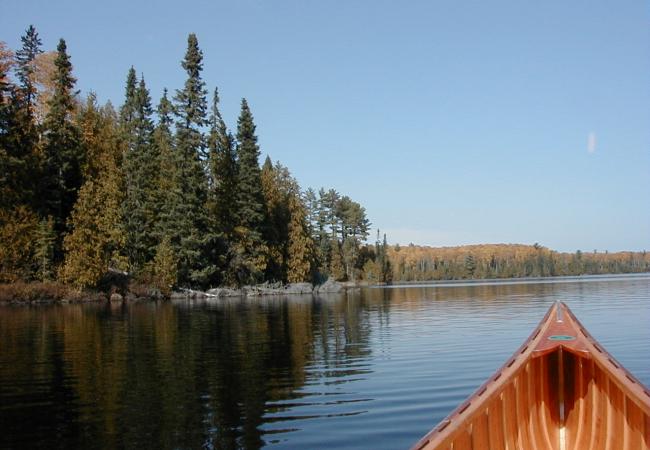
"The way of a canoe is the way of the wilderness, and of a freedom almost forgotten," wrote Sigurd Olson.
(MPR Photo/Bob Kelleher)
"The movement of a canoe is like a reed in the wind. Silence is part of it, and the sounds of lapping water, bird songs, and wind in the trees. It is part of the medium through which it floats, the sky, the water, the shores....There is magic in the feel of a paddle and the movement of a canoe, a magic compounded of distance, adventure, solitude, and peace. The way of a canoe is the way of the wilderness, and of a freedom almost forgotten. It is an antidote to insecurity, the open door to waterways of ages past and a way of life with profound and abiding satisfactions. When a man is part of his canoe, he is part of all that canoes have ever known."
The Singing Wilderness (1956)
SIGURD F. OLSON
by DAVID BACKES, biographer
Sigurd F. Olson was one of America’s most beloved nature writers and most influential conservationists of the 20th century. Best known as the author of “The Singing Wilderness” and eight other books, Olson also played an important role in the preservation of a number of national parks, seashores, and wilderness areas.
As an author and speaker, Olson was unsurpassed in capturing the sense of awe and wonder and connectedness that close contact with nature can bring to people. Beyond that, his ideas about the meaning of wilderness had a power and uniqueness that are not only relevant in the twenty-first century, but needed. The biological underpinning to his philosophy comes from a theory he developed and called “racial memory”–the idea that humans have a biological attachment to nature that arises from our long evolutionary heritage. This theory, which has ties to the romantics and primitivists and to the “collective unconscious” described by psychologist Carl Jung, did not receive much scholarly attention or support during his lifetime, but in recent years it has become the cornerstone of the emerging scholarly discipline of evolutionary psychology.
Olson incorporated the theory of racial memory with a spiritual perspective steeped in evolutionary humanism–the idea (promoted by Aldous and Julian Huxley, Lewis Mumford, and Pierre Teilhard de Chardin, among others) that evolution is proceeding along a spiritual path toward union with God. Olson agreed with the basic arguments of Robert Marshall, Aldo Leopold, and other leading wilderness activists of his generation, but his “land aesthetic” (what makes a place beautiful and gives it meaning) went farther than that of Leopold’s by incorporating humans as part of, not separate from, the land, and this perspective informed his unique wilderness philosophy that ultimately became a theology. To Olson, because visitors to a wilderness area experience a high degree of silence and solitude amid noncivilized surroundings, they can easily reconnect to their evolutionary heritage as humans, and by sensing the grandeur of the eternal mystery of creation and their own participation in this mystery–their own connectedness to all things–they will come to sense the sacredness of all creation. If, as Olson believed, evolution is proceeding toward union with God, and if, as he also believed, individual spiritual growth plays an essential role in this evolutionary process, then a wilderness experience can be considered a sacramental experience, of benefit not just to the individual or to humanity at large but to all of creation.
Olson was a tremendously inspiring writer and speaker, and yet he also played a vital role as a wilderness activist. From 1948 until his death in 1982, he was the wilderness ecologist for the Izaak Walton League of America. In the 1950s he was vice president and then president of the National Parks Association, and built friendships and influence within the National Park Service and the Department of the Interior, leading to a number of years of service as an advisor to the interior secretary and park service director. During the Kennedy and Johnson administrations, Olson helped scout out, advocate and present plans for preserving a number of national park system lands, from Cape Cod in the East, to Padre Island in the South, Point Reyes in the West, and Voyageurs National Park in the North. He was a vital member of the Alaska Task Force team whose research and work in the 1960s ultimately bore fruition in the Alaska Lands Act of 1980, the largest single act of wilderness preservation in the history of the world. Olson also was influential in Canada, especially in his efforts to protect the Quetico-Superior wilderness of Ontario and Minnesota, and in his efforts to protect the portions of the Yukon adjoining preserved areas in arctic Alaska. Finally, from 1956 until the late 1970s, Olson was active in governing the Wilderness Society. As vice president and president of the organization from 1963-1971, he helped modernize the group’s approach in an age of public relations and litigation.
One measure of his importance and uniqueness is this: Sigurd Olson is the only person to have received the highest honors of four leading citizen organizations that focus on the nation’s public lands: the Izaak Walton League, the National Wildlife Federation, the Sierra Club, and the Wilderness Society. That accomplishment is even more extraordinary in light of the fact that he also received the John Burroughs Medal, the highest honor in nature writing. Of the dozens of winners of the medal since it was first awarded in 1926, only a handful have played major leadership roles in national conservation organizations; only two others (Aldo Leopold and Paul Brooks) had received even one of the major conservation group awards by the time I completed Olson’s biography in 1997.
At the same time, to focus too closely on the question of his originality or influence, as scholars tend to do, is to miss a key point. A theology or a philosophy is worthless if it cannot be expressed in a way that touches people’s hearts. Olson wanted to bring his message of wilderness salvation to people who would never think of reading Teilhard de Chardin or Lewis Mumford or even a more popular but still intellectual writer such as Loren Eiseley. In August 1960, for example, he said in a note to himself, “I must bridge the gap between Eiseley and my audience of common people, the non-intellectuals…who feel deeply but are groping for ideas.” And he found tremendous success. His collected papers at the Minnesota Historical Society are full of letters from men and women who said they had finally found someone who had put into words the feelings they had experienced in the outdoors, either in their backyards or in the wilderness. Olson’s special gift was his ability to express his deep message about the spiritual values of nature by writing about simple things–the sound of wings over a marsh, the smell of a bog, the memories stirred by a campfire, the movement of a canoe–in a way that captured the emotions they stirred. Sigurd Olson may not have become the Baptist missionary his father once hoped for, but a missionary he was, a wilderness evangelist with legions of followers. He was an apostle of awe, a witness for wonder, and an icon of the modern wilderness movement whose words will continue to stir hearts and souls for generations to come.
(http://singingwilderness.net/wordpress/sigurd-f-olson/)








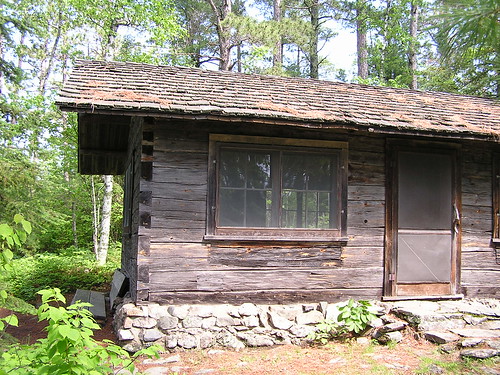
![[photo of Olson's writing shack]](http://www4.uwm.edu/letsci/research/sigurd_olson/shack/shack01a.jpg)

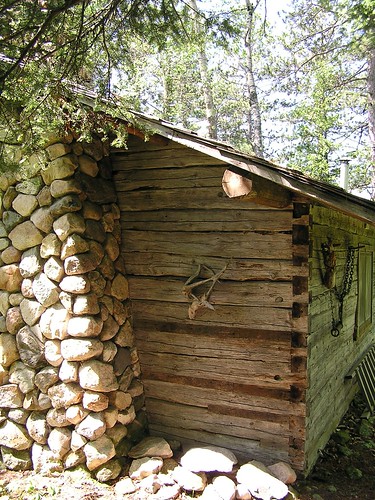
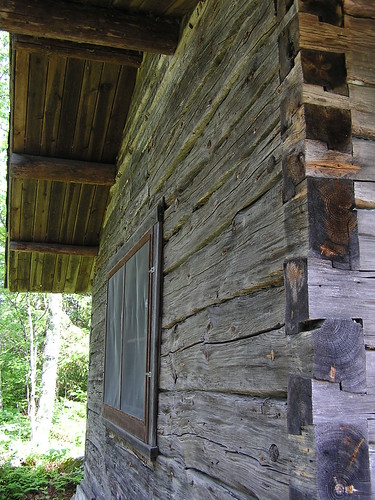
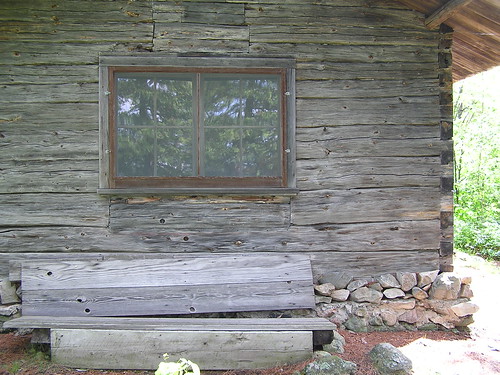
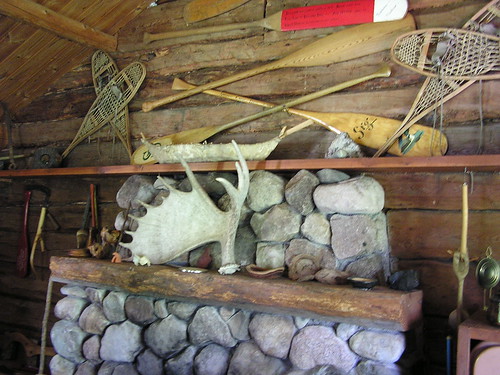
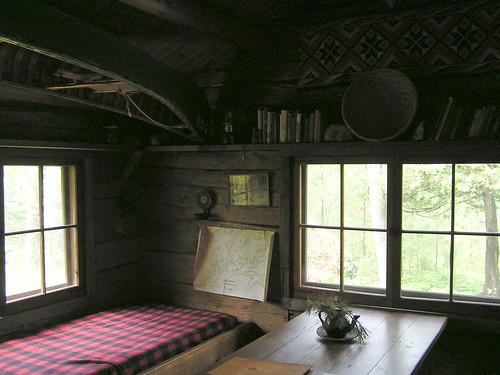

No hay comentarios:
Publicar un comentario